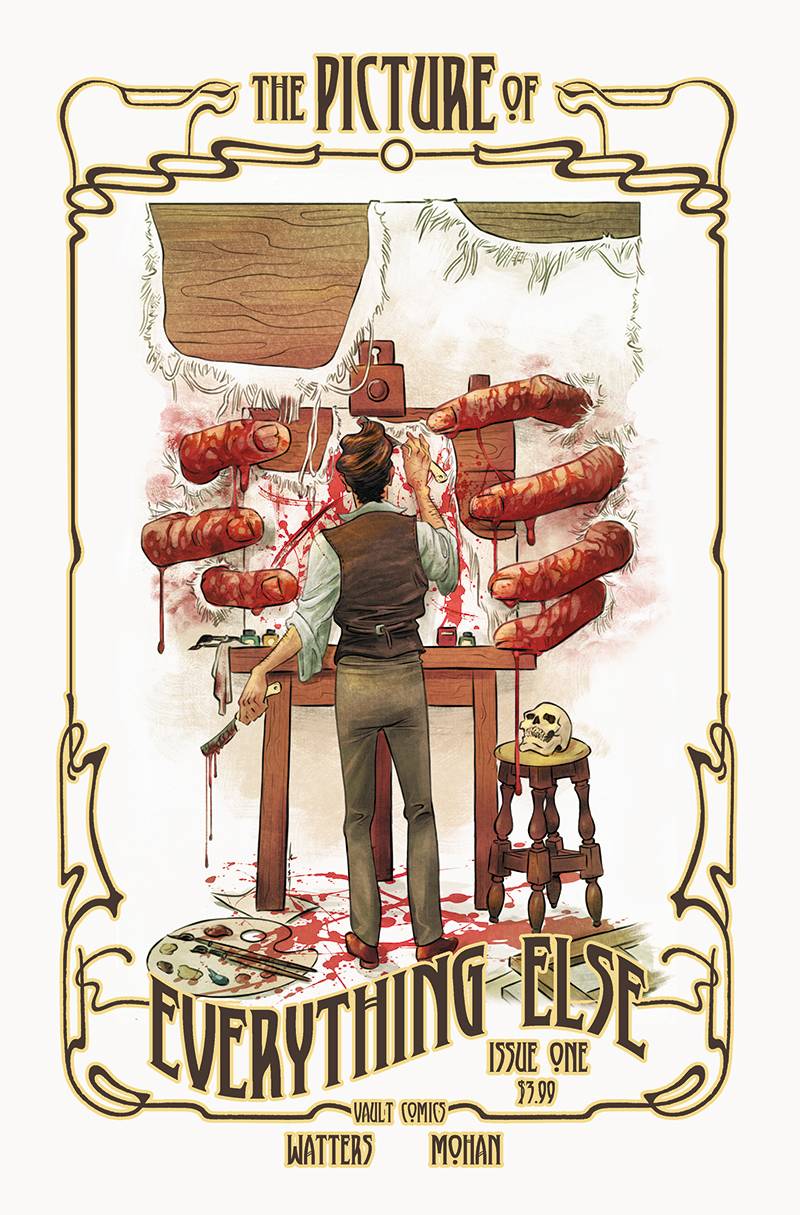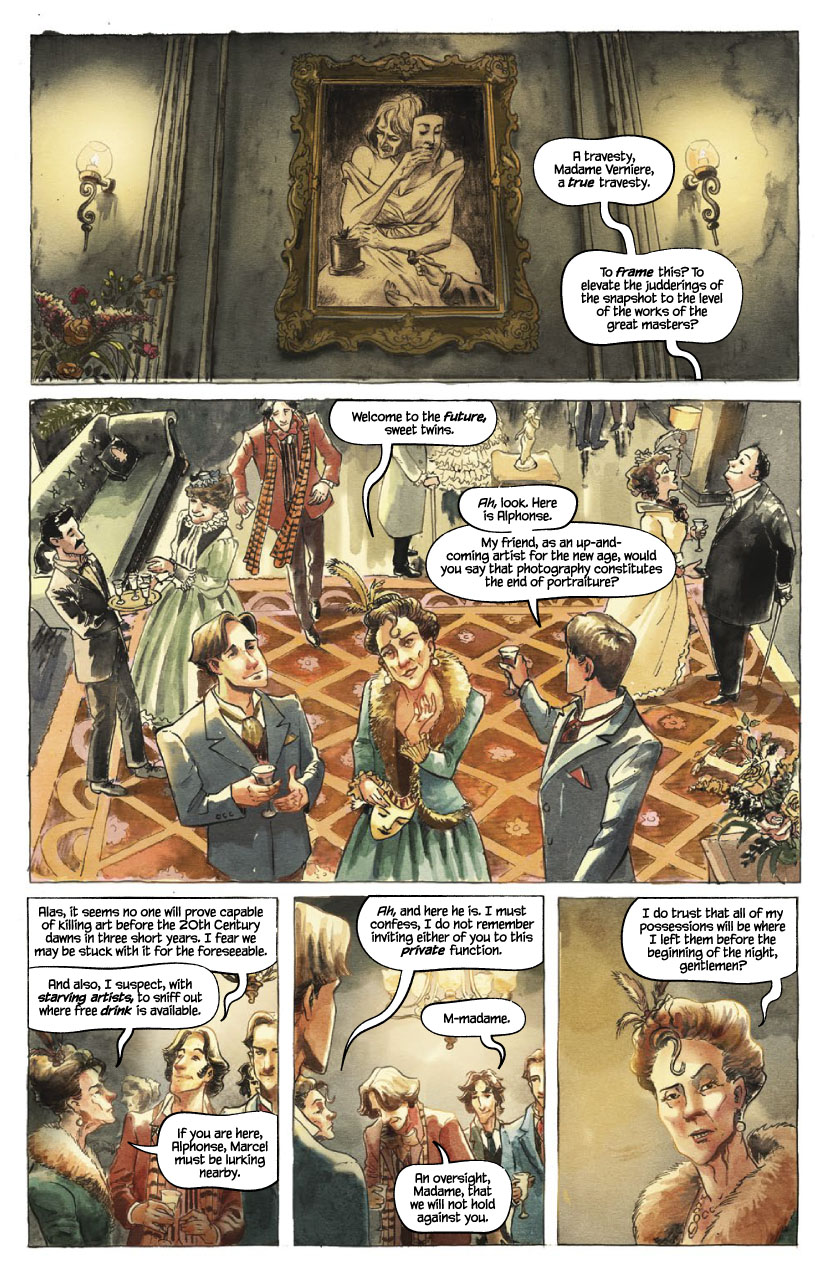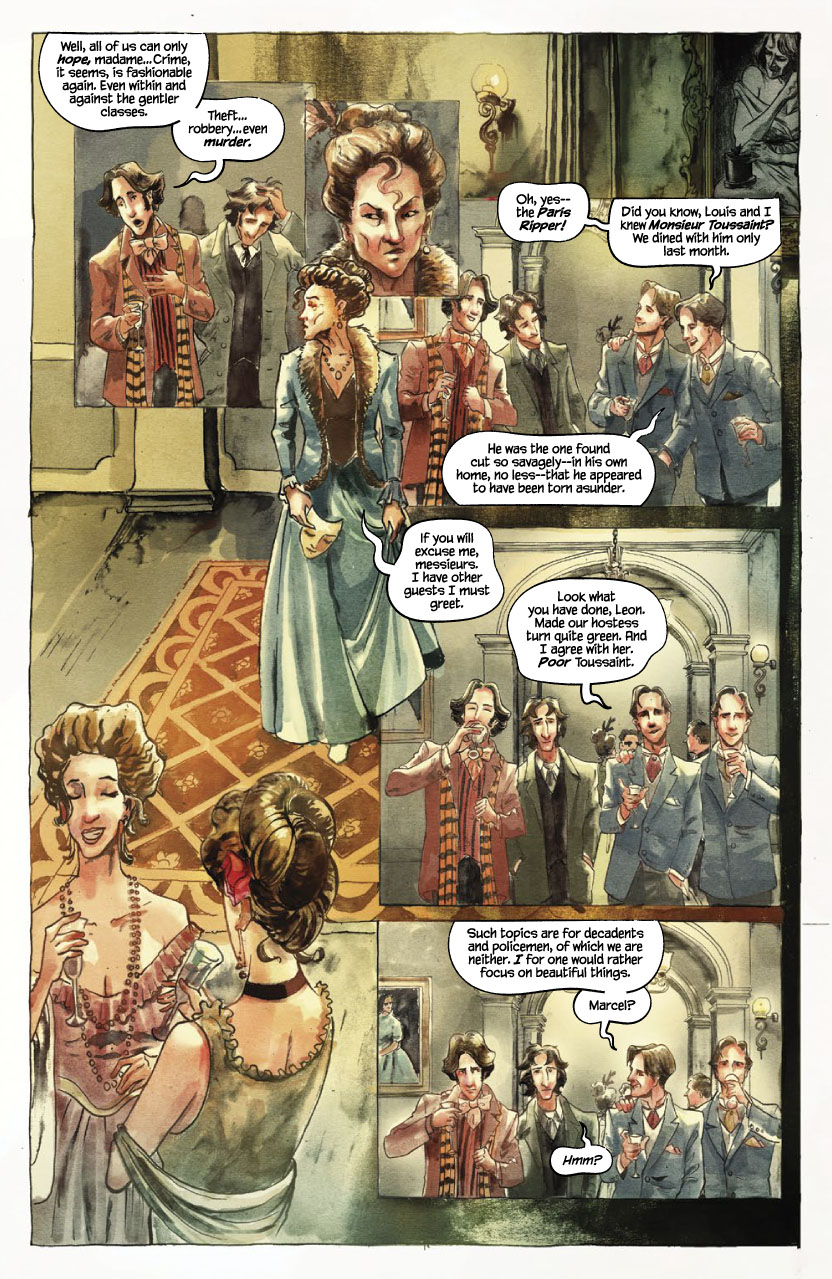Best Shots advance review: The Picture of Everything Else #1 "big horror moments land with aplomb and gusto"
Dan Watters and Kishore Mohan dive into a serial killer drama with The Picture of Everything Else #1

Every artist wants to change the world, though The Picture of Everything Else #1 observes a more literal application of that idea.
Paris is where writer Dan Watters sets his tale. On the cusp of the 20th Century, the rise of modernity is underway and the city will only grow as a hub for art of all kinds as it goes on. At fancy parties, the guests debate the ontological differences between painting and photography, but their discussions eventually move on to someone called the Paris Killer, who the book gradually demonstrates as having a very particular way in which their work influences people.
Written by Dan Watters
Art by Kishore Mohan
Lettered by Aditya Bidikar
Published by Vault Comics
'Rama Rating: 8 out of 10
Of course, all of the headier ideas and thematic concerns running through the book would fall flat were the underlying structure and horror mechanics not as strong as they as are. By bringing up the killer early on, their presence haunts the pages like a spectre, even before they make a direct appearance. While the story at large has ties to Oscar Wilde's Dorian Grey, the plot of the issue gets underway at one of those fancy parties. Lead characters Alphonse and Marcel are not on the guestlist but have managed to find a way around that. Though they are not just here to schmooze with the upper-class as Alphonse lifts a statue and the pair take off out of a window in sharp fashion.

Kishore Mohan's light linework and sumptuous watercolors are the kind you want to dive right into. This opening sequence has some great craftsmanship with regards to how they move around the space of the party, alternating focus between Alphonse's sticky fingers and the chit-chat that Marcel partakes in. By ensuring there is frequently something occurring in the background and foreground, the depth of his art is enhanced, bringing the setting to life all the more. In the panel which concludes the scene, Mohan opts to stay inside the building as the duo make their escape over the wall. The perspective creates a long, rolling view of the Parisian street ahead. It's an expansive image that allows you to easily dream of being there and carrying on down it, getting lost further into the city were the threat of the Killer not looming in the alleyways and shadows.
Alphonse and Marcel are collaborators though they have different perspectives on creation. Marcel is content with working at their studio, while Alphonse finds the thrill of existence to be an act of artistic freedom or living transgression as he puts it. Their relationship is the central pillar of the book, as Watters' plotting of this first issue shows the fate that befalls the duo as the night goes forth, accompanied by a letter written three years later that ruminates on the events. (Special credit should be given to Aditya Bidikar here, as the cursive that the letterer uses for this correspondence is readable without sabotaging the flow unlike most attempts at the style.)
This first issue of The Picture of Everything Else makes for an interesting comparison to Watters' other first issue of the month, Home Sick Pilots #1. Both have a similar story engine at their core – on one night, the members of a friendship split up for a brief time, in which one travels to a house where they stumble on something they couldn't have anticipated, dread building until an explosion of horror. This issue is the most successful variation on the concept, namely for the more streamlined structure of the night. Much like Mohan's dexterity of depth, the letter adds an additional layer on top of everything already going on rather than fragmenting the approach as cutting between the two time periods potentially could.

The Picture of Everything Else #1 preview


As a result, the big horror moments land with aplomb and gusto as all the build-up works in their favor. The first commands the full dimensions of the page, with the watercolor texture of Mohan's work making for a standalone image like that you could find on a canvas, albeit one you'd question if you saw it hanging on someone's wall.
Get the best comic news, insights, opinions, analysis and more!
It also works particularly well with how Watters' script moves to further consider art imitating life and vice versa. These ideas of what gets reflected and refracted by the culture onto the observers works as well as it does because of the book's style. Aspects like the soft color and pinpoint, tailored fashion feels of the era. The times are changing, though people haven't entirely abandoned prior trends. And even if what Alphonse and Marcel find themselves entangled in doesn't make much of a splash outside of Paris, it's certain that their worlds will never be the same.
The Picture of Everything Else #1 will be available on December 23 in comic book stores and digitally. Check out our list of the best comic readers for Android and iOS devices.
Matt Sibley is a comics critic with Best Shots at Newsarama, who has contributed to the site for many years. Since 2016 in fact.


